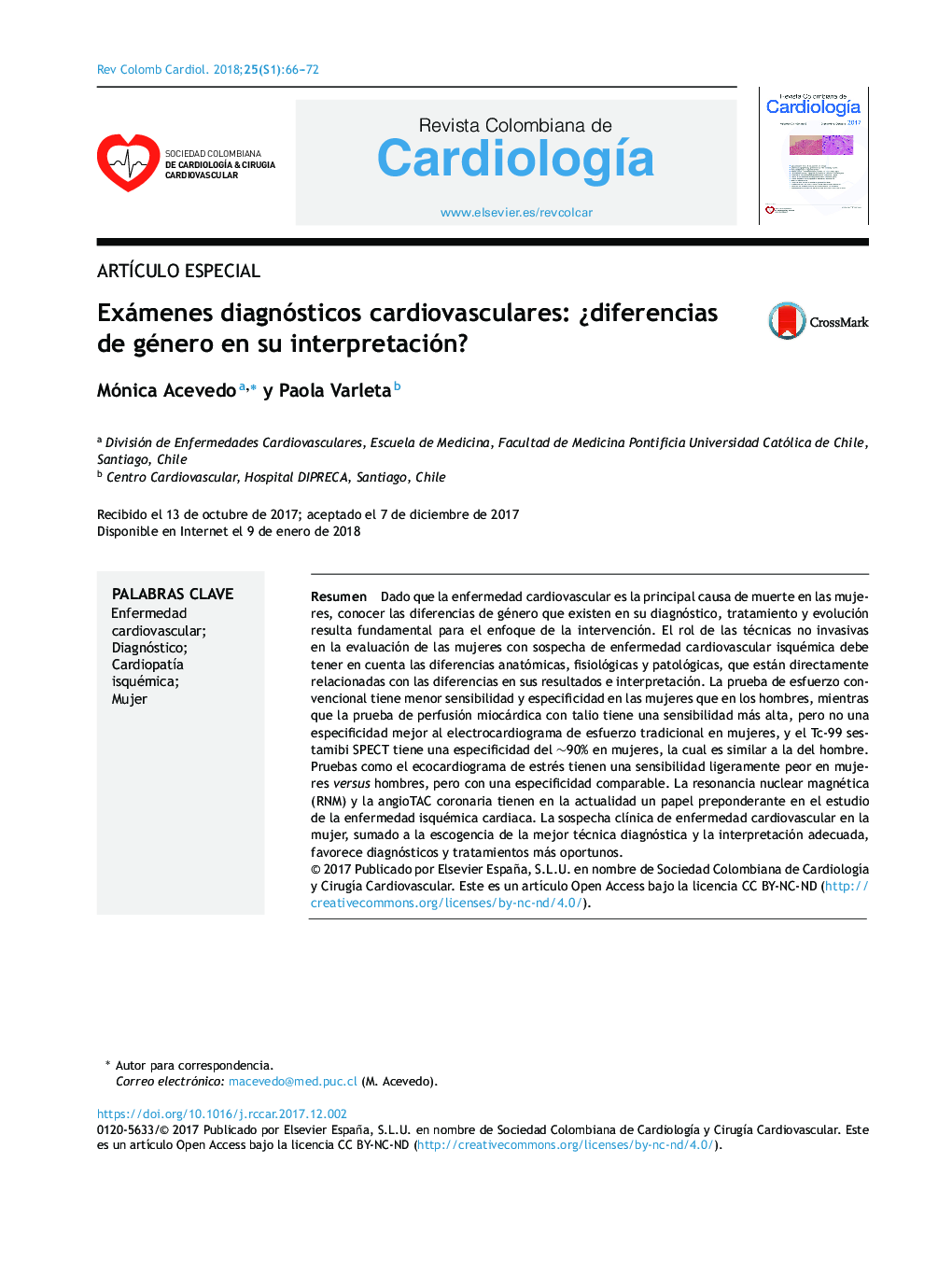| Article ID | Journal | Published Year | Pages | File Type |
|---|---|---|---|---|
| 8676172 | Revista Colombiana de Cardiología | 2018 | 7 Pages |
Abstract
Given that cardiovascular disease is the main cause of death in women, awareness of the gender differences in its diagnosis, treatment and development is essential for intervention. The role of non-invasive techniques in the assessment of women with suspected ischemic heart disease should take into account the anatomical, physiological and pathological differences which are directly related to their results and interpretation. Conventional stress tests have less sensitivity and specificity in women than in men, while thallium myocardial perfusion scans have a higher sensitivity, but not a better specificity, than the conventional stress electrocardiogram in women; and the Tc-99 sestamibi SPECT has a â¼90% specificity in women, which is similar to that in men. Tests such as stress echocardiograms have a slightly worse sensitivity in women versus men, with a comparable specificity. Nuclear magnetic resonance (NMR) and coronary CT angiography currently have a preponderant role in the study of ischemic heart disease. The clinical suspicion of cardiovascular disease in women, together with the selection of the best diagnostic technique and an adequate interpretation, favors more timely diagnoses and treatments.
Keywords
Related Topics
Health Sciences
Medicine and Dentistry
Cardiology and Cardiovascular Medicine
Authors
Mónica Acevedo, Paola Varleta,
